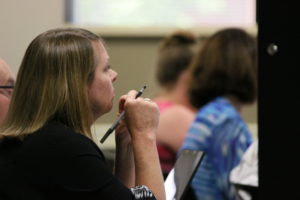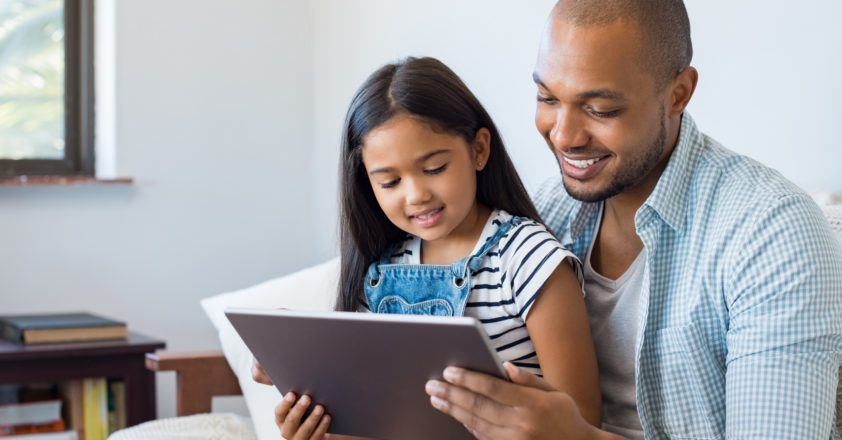Exploring Strategies for Media Literacy for Families
Educators and families can work together to sort through recommendations for media use  and find a balanced approach for screen time by considering the content, context and the individual child.
and find a balanced approach for screen time by considering the content, context and the individual child.
Speaking to the Maryland Family Engagement Coalition at its June meeting, Lisa Guernsey, director of the Teaching, Learning, and Tech program and senior advisor to the Early Elementary Education Policy Program at New America, discussed how educators can help families make informed decisions and devise strategies for media use.
Coalition members heard from Guernsey as part of an afternoon dedicated to learning more about media literacy for children of all ages. They also spent time discussing information that would be useful for a potential set of tip sheets for families about media use.
“There is a lot of guidance out there,” said Guernsey, who co-authored Tap, Click, Read: Growing Readers in a World of Screens. “We’re at a place now where it’s about … thinking about what’s working best for certain age groups and what will help the families you work with.”
 Conflicting information and recommendations about the appropriate amount of screen time for children and the subsequent effects can leave families and educators confused. But a closer look at research and guidance from respected organizations such as the American Academy of Pediatrics (AAP) and the National Association for the Education of Young Children (NAEYC) shows that families can and should use their judgement to determine time and format, Guernsey said.
Conflicting information and recommendations about the appropriate amount of screen time for children and the subsequent effects can leave families and educators confused. But a closer look at research and guidance from respected organizations such as the American Academy of Pediatrics (AAP) and the National Association for the Education of Young Children (NAEYC) shows that families can and should use their judgement to determine time and format, Guernsey said.
In her presentation, The Science & Guidance on Screen Media and Kids: Where We Stand in 2019, Guernsey talked about various recent articles with recommendations ranging from prohibiting or severely restricting all screen use to tossing out rules altogether. Amid these “mixed signals,” educators and families can also find moderate, common-sense advice that’s backed by research.
“There’s a lot of incoming information and not a lot of clarity until you start looking at the national organizations that have been trying to do the hard work of [examining the research],” she said.
AAP’s most recent policy statement offers specific recommendations for doctors and families. These include a suggestion for families to create a media plan that takes into account family dynamics and children’s temperaments. The plan also emphasizes the importance of content and context, which Guernsey also examined in her book.
“Every family may need to make their own decisions about this. It’s pretty hard to put a one-size-fits-all rule [like]  all kids should have no more than one hour of screen time,” Guernsey said. “Families have lots of different circumstances.”
all kids should have no more than one hour of screen time,” Guernsey said. “Families have lots of different circumstances.”
Another resource that can help families is The Three C’s: Content, Context, and Your Child, a quiz that gives suggestions for structuring screen time based on current habits and circumstances.
By considering the types of content, how much adults are interacting with children while using screens, and a child’s reactions to what they’re seeing, families can find a balance between quantity and quality that will work in their day-to-day lives.
Ultimately, what is important for children is to have the adults in their lives paying attention and helping them to choose and understand what they’re watching.




